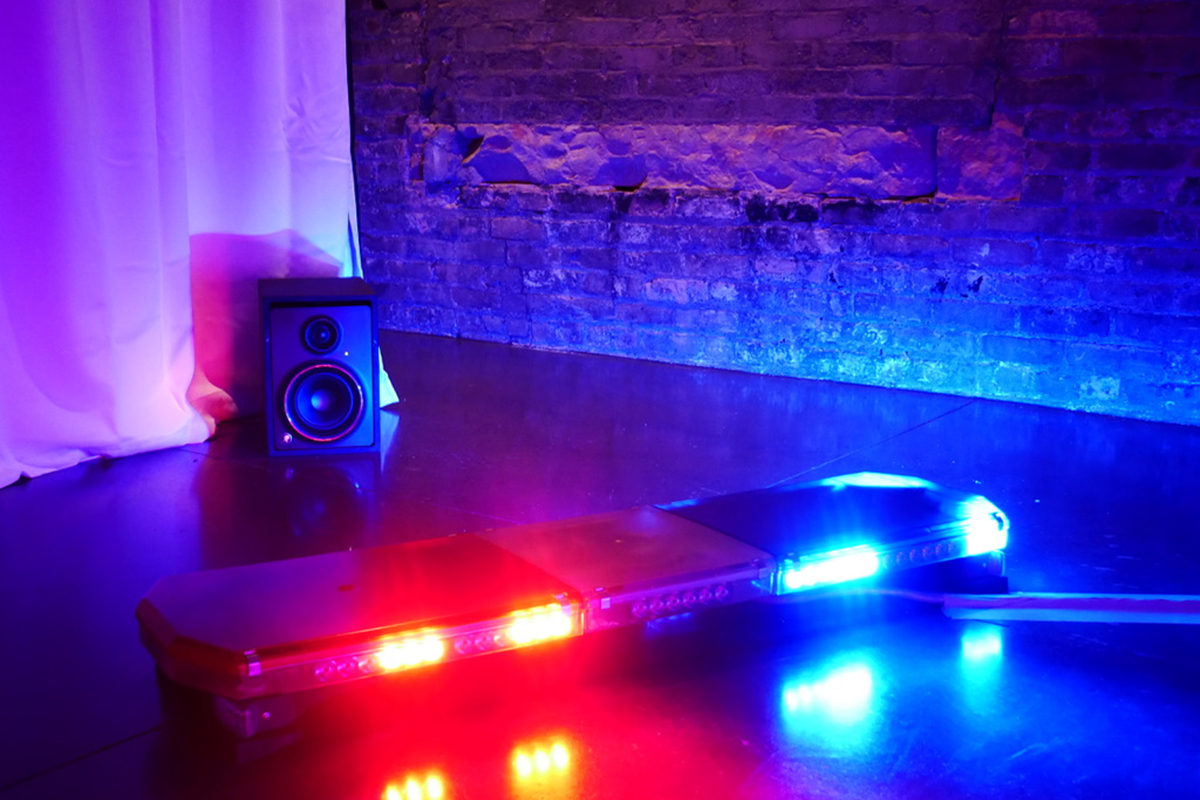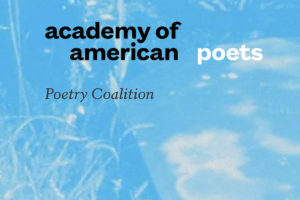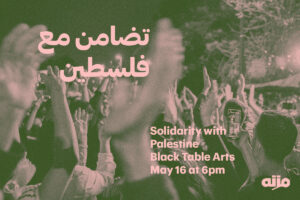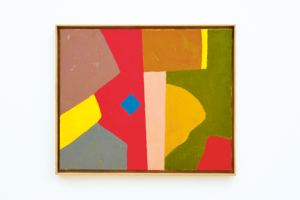
Joe Namy: The Deeper Half Blue
Biographical Info
December 4 – Workshop
December 8 – Listening Session
Local Collaborators
About Joe Namy
Half Blue comes out of a long-term poetic exploration on the colors, tones, and language that have emerged around the increased militarization of police and its everyday impact on our community. It offers a space for contemplation, a space to honor those who have fallen victim to this type of injustice, and a space to celebrate strategies for coping and resilience. This programming is conceived as an extension to Namy’s installation Half Blue, as part of the exhibition History Is Not Here.
The Deeper Half Blue Workshop
Participants will explore various approaches to art-making with a focus on sound as a tool for transformation, engaging in exercises and discussions around the politics of music/sound, framed by the poetics embedded in Namy’s installation and listening session at the M.
What: The Deeper Half Blue: a workshop organized by Joe Namy
When: Wednesday, December 4, 2019 1pm – 3pm
Where: The M, 350 Robert Street North, St. Paul MN 55101
The Deeper Half Blue Listening Session

What gets amplified in our pockets, on our screens, in our DMs? An assembly of artists, dancers, and poets will come together for a collective listening experience, using music as material to address modes of deep listening in difficult times. This session is conceived an extension to Namy’s installation Half Blue, as part of the exhibition History Is Not Here.
Check back for more info on participating artists.
What: A listening session organized by Joe Namy
When: Sunday, December 8, 2019 1pm-4pm
Where: The M, 350 Robert Street North, St. Paul MN 55101
Creative Collaborators

Margaret Ogas is a dance artist based in Minneapolis who makes funky, spunky, socially engaged work. She is a proud midwestern Chicana hailing from Milwaukee, WI. Ogas graduated from the University of Minnesota with a BFA in Dance. She has presented her choreography at the Walker Art Center, the Cedar Cultural Center, 9×22 Dance Lab, Regis Center for Art, CTUL (Centro de Trabajadores Unidos en Lucha) and in public space on Lake Street for Love East Lake. As a performer, she has worked with Chris Schlichting, Laurie Van Weiren, and is currently a cast member in Taja Will’s Blood Language.
Photo Credit: Bobby Rogers, Walker Art Center

George Abraham is a Palestinian American poet from Jacksonville, Florida. They are the author of Birthright (Button Poetry, 2020), and the chapbooks: the specimen’s apology (Sibling Rivalry Press, 2019) and al youm (TAR, 2017). He is a Kundiman and Watering Hole fellow, and recipient of the College Union Poetry Slam International’s Best Poet title. Their work has been published with the Paris Review, American Poetry Review, LitHub, Poem-A-Day, and Bettering American Poetry. He is currently based in Massachusetts, where he is a PhD candidate in Bioengineering at Harvard University, studying neural control of movement.

Dua Saleh grew up in St. Paul’s Rondo neighborhood. It was there, in a black cultural center of the Midwest with a once-thriving soul and jazz scene, where Dua became obsessed with music. From the sounds of their home country of Sudan, to the jazz-scat singers of the 1940s, to R&B and hip-hop of the early 2000s, to dancehall and afro-beat, everything was fair game for Dua. It’s Dua Saleh’s fluidity – of sound, of form, of self-presentation – that makes them so enlivening. Their vocal range is elastic, floating from an elegant purr into an unvarnished, guttural growl. Their writing can be dreamy, but more often plumbs the soul, pricking deep with a poet’s precision and showing the scars that remain.

Pedram Baldari is a Kurdish-Iranian born, sculptor, architect and interdisciplinary artist , working in installation, site specific and performance art. He has been featured in numerous national and international art exhibitions since 2010, including works at Victoria and Albert Museum London 2012, Documenta 13th Video Import-Export program, Video Nomad Tokyo 2015, Art Basel Basel Switzerland 2014. Recent projects include a collaborative performance with Nooshin Hakim, titled “Donkeyfull Mind”. He has been awarded with 2020 Mac Dowell Fellowship for his project “Variations of Sounds, Traveling Between a Barrel and a Heart.”

Sagirah Shahid is a Minneapolis, Minnesota based poet. Known for her dynamic storytelling abilities, her writing often reflects upon her upbringing as an African American Muslim woman.
About Joe Namy
Joe Namy (b. 1978, Lansing) is a media artist, composer, and educator based between London and Beirut. He completed an MFA from New York University, was part of the inaugural class of the Ashkal Alwan Home Workspace Program where he now teaches, and has independently studied jazz, Arabic, and heavy metal drumming. His work often addresses identity, memory, and power structures embedded in sound/music, and has been shown internationally in galleries, museums, film festivals, and public performances.
About History Is Not Here: Art and the Arab Imaginary

History Is Not Here: Art and the Arab Imaginary presents the work of artists who address what can be termed the “Arab imaginary” as a strategy for examining various social, cultural, and political positions. Best understood through a framework that recognizes the so-called Arab world and its diaspora as multiform, made up of 22 countries with distinct histories as well as diverse ethnicities, languages, and religions, this exhibition explores and scrutinizes the ways in which the region has been historicized. Through painting, drawing, photography, sculpture, book art, installation, and video, featured artists make connections between contemporary geopolitics and the histories that inform them. Their works draw attention to the challenges of representation, including misunderstandings and missteps, and the limiting and problematic terms that are often used to define the region. History Is Not Here rejects the idea of history as a fixed category and looks to alternative imagery and approaches from which new “imaginaries” can be generated. This exhibition is on view at the M September 12, 2019 to January 5, 2020.










